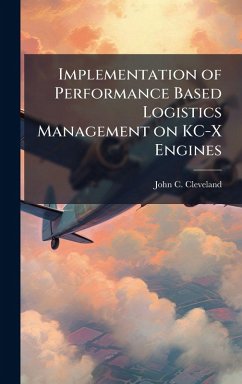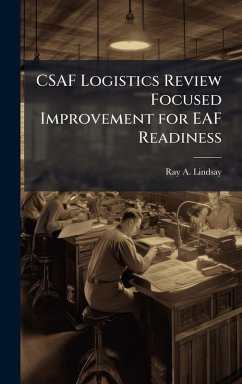
An Extensible Markup Language Strategy for Focused Logistics Background and Value of Standards Development and Management
Versandkostenfrei!
Versandfertig in über 4 Wochen
25,99 €
inkl. MwSt.
Weitere Ausgaben:

PAYBACK Punkte
13 °P sammeln!
Accurate, up-to-date information concerning transportation and movement of forces, equipment and supplies is critical to the success of a Joint Task Force. Joint Vision 2020 outlines the concept of Focused Logistics, which calls for total asset visibility (TAV). The primary provider of TAV will be the United States Transportation Command (USTRANSCOM) which is responsible for the Defense Transportation System (DTS). Critical to TAV throughout the DTS cycle is the implementation of web-based standards. The World Wide Web has changed the way the world, including the Department of Defense (DoD), t...
Accurate, up-to-date information concerning transportation and movement of forces, equipment and supplies is critical to the success of a Joint Task Force. Joint Vision 2020 outlines the concept of Focused Logistics, which calls for total asset visibility (TAV). The primary provider of TAV will be the United States Transportation Command (USTRANSCOM) which is responsible for the Defense Transportation System (DTS). Critical to TAV throughout the DTS cycle is the implementation of web-based standards. The World Wide Web has changed the way the world, including the Department of Defense (DoD), thinks about and views information. The ability to access and use information rests on information technology (IT) standards. One standard that has seen recent widespread acceptance is the Extensible Markup Language (XML). This research paper addresses two important questions related to the proliferation of XML specifications throughout industry and the DoD. First, what are the current industry and DoD trends in transportation related XML standards development? Second, should USTRANSCOM interact with the IT standards development community in order to influence the XML standards development process? This work has been selected by scholars as being culturally important, and is part of the knowledge base of civilization as we know it. This work was reproduced from the original artifact, and remains as true to the original work as possible. Therefore, you will see the original copyright references, library stamps (as most of these works have been housed in our most important libraries around the world), and other notations in the work. This work is in the public domain in the United States of America, and possibly other nations. Within the United States, you may freely copy and distribute this work, as no entity (individual or corporate) has a copyright on the body of the work. As a reproduction of a historical artifact, this work may contain missing or blurred pages, poor pictures, errant marks, etc. Scholars believe, and we concur, that this work is important enough to be preserved, reproduced, and made generally available to the public. We appreciate your support of the preservation process, and thank you for being an important part of keeping this knowledge alive and relevant.












